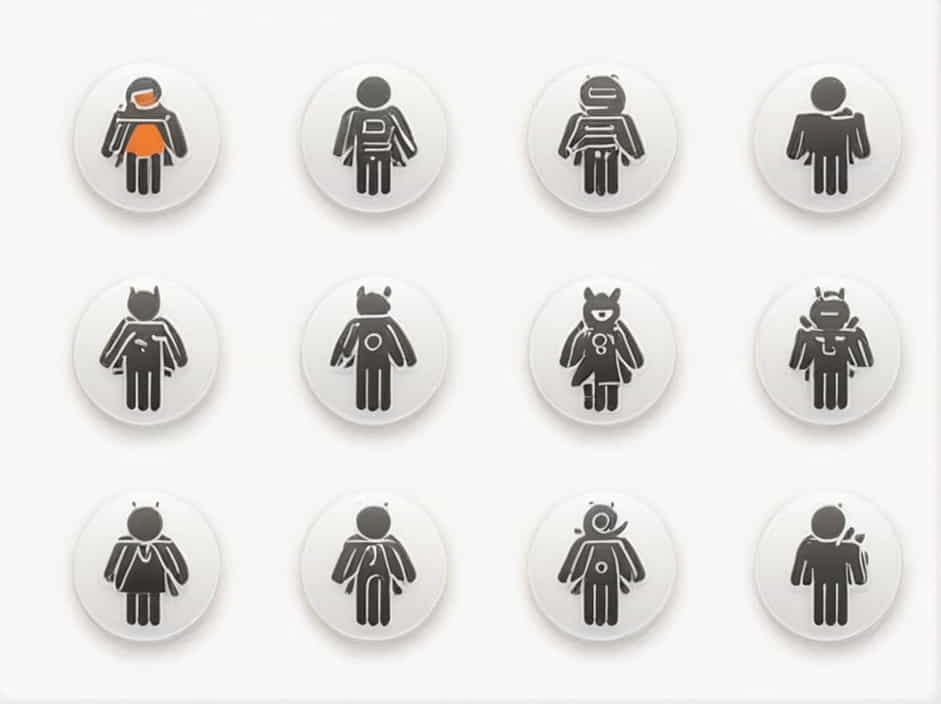The head is the uppermost part of the human body and plays a crucial role in various bodily functions. It houses the brain, which controls all body activities, and contains essential sensory organs such as the eyes, ears, nose, and mouth. The head is also responsible for communication, facial expressions, and identity.
In this topic, we will explore the anatomy, functions, and importance of the head, including its skeletal structure, muscles, and sensory systems. We will also discuss common health issues related to the head and ways to maintain its well-being.
Anatomy of the Head
The human head is a complex structure made up of bones, muscles, nerves, and sensory organs. It provides protection for the brain and supports various functions necessary for survival.
1. The Skull: Protecting the Brain
The skull is the bony structure that encloses and protects the brain. It is made up of 22 bones, divided into two main parts:
- Cranium: The upper portion that surrounds the brain.
- Facial Bones: The lower portion that forms the structure of the face.
The skull not only protects delicate organs but also serves as an attachment point for muscles that control facial movements and chewing.
2. The Brain: The Control Center
The brain is the most vital organ within the head, responsible for:
- Controlling body functions such as movement, breathing, and digestion.
- Processing sensory information from the eyes, ears, nose, and tongue.
- Thinking, memory, emotions, and decision-making.
The brain is divided into different regions, including the cerebrum, cerebellum, and brainstem, each with specialized functions.
3. The Sensory Organs in the Head
The head contains five major sensory organs, which help us interact with the environment:
- Eyes: Responsible for vision, detecting light, colors, and depth.
- Ears: Detect sounds and help maintain balance.
- Nose: Enables the sense of smell and plays a role in taste perception.
- Mouth and Tongue: Assist in tasting, speaking, and digestion.
- Skin (on the face and scalp): Helps detect touch, temperature, and pain.
These sensory organs work together to provide awareness of surroundings and ensure survival.
Functions of the Head
The head is responsible for various functions that support life and communication. Some of its most important roles include:
1. Communication and Expression
The face plays a key role in expressing emotions through facial movements. The muscles of the face, such as the orbicularis oculi (around the eyes) and zygomaticus major (for smiling), allow humans to communicate non-verbally.
Speech is also controlled by the head, as the mouth, tongue, vocal cords, and brain work together to produce sound and language.
2. Eating and Digestion
The mouth, teeth, and tongue are essential for chewing and breaking down food before digestion. The salivary glands in the mouth produce enzymes that begin the process of breaking down food before it moves to the stomach.
3. Balance and Coordination
The inner ear contains structures that help maintain balance and spatial awareness. This function is essential for standing, walking, and moving without falling.
4. Protection of Vital Organs
The skull protects the brain, and the eyelids shield the eyes from dust and injury. The nasal cavity filters air before it reaches the lungs, preventing harmful ptopics from entering the body.
Common Health Issues Related to the Head
Since the head houses critical organs, it is prone to various health conditions, including:
1. Headaches and Migraines
- Common causes include stress, dehydration, eye strain, or underlying medical conditions.
- Migraines can be severe, causing nausea, sensitivity to light, and throbbing pain.
2. Head Injuries
- Concussions and skull fractures can result from falls, accidents, or sports injuries.
- Wearing a helmet during physical activities can reduce the risk of head trauma.
3. Ear and Eye Problems
- Hearing loss, infections, and tinnitus (ringing in the ears) are common ear-related issues.
- Vision problems like myopia (nearsightedness) or hyperopia (farsightedness) often require glasses or corrective surgery.
4. Sinus and Nasal Issues
- Sinus infections (sinusitis) can cause congestion, headaches, and facial pain.
- Allergies often lead to runny nose, sneezing, and nasal congestion.
5. Dental and Oral Health Problems
- Cavities, gum disease, and tooth infections affect oral health.
- Brushing, flossing, and regular dental visits can help prevent these issues.
How to Maintain a Healthy Head
Taking care of the head is essential for overall health. Here are some key ways to keep the head and its organs in good condition:
1. Protect the Brain
- Wear a helmet when cycling, skating, or engaging in contact sports.
- Avoid head trauma by using seat belts and being cautious in slippery areas.
2. Maintain Good Eye Health
- Reduce screen time and take breaks to prevent eye strain.
- Wear sunglasses to protect eyes from UV rays.
3. Care for the Ears
- Avoid loud noises to prevent hearing damage.
- Clean ears properly and avoid inserting objects that could damage the eardrum.
4. Keep the Sinuses Clear
- Stay hydrated and use a humidifier to prevent sinus dryness.
- Avoid allergens and pollutants that trigger nasal congestion.
5. Practice Good Oral Hygiene
- Brush and floss regularly to prevent tooth decay and gum disease.
- Visit a dentist at least twice a year for check-ups.
6. Prevent Headaches and Migraines
- Stay hydrated and get enough sleep.
- Manage stress through relaxation techniques like meditation and exercise.
The head is the uppermost part of the human body and plays a vital role in protection, sensory perception, communication, and brain function. It contains essential organs like the brain, eyes, ears, nose, and mouth, each contributing to overall health and well-being.
By understanding the anatomy, functions, and common health concerns related to the head, individuals can take preventative measures to maintain good health. Practicing proper hygiene, protecting the head from injuries, and seeking medical care when needed ensures the optimal function of this important body part.
